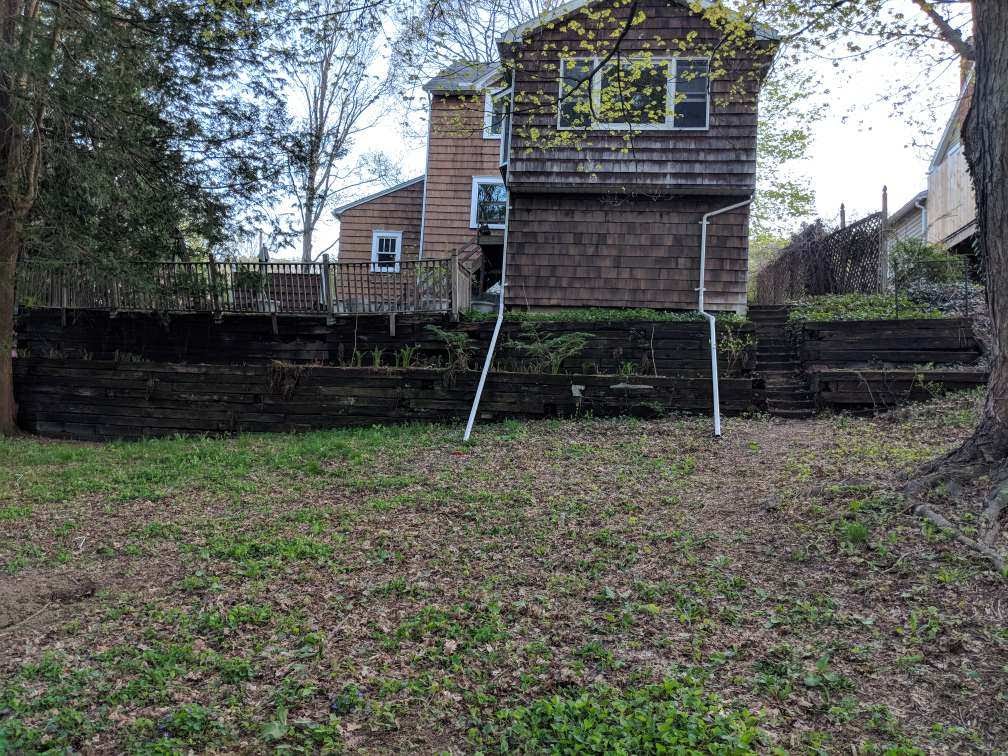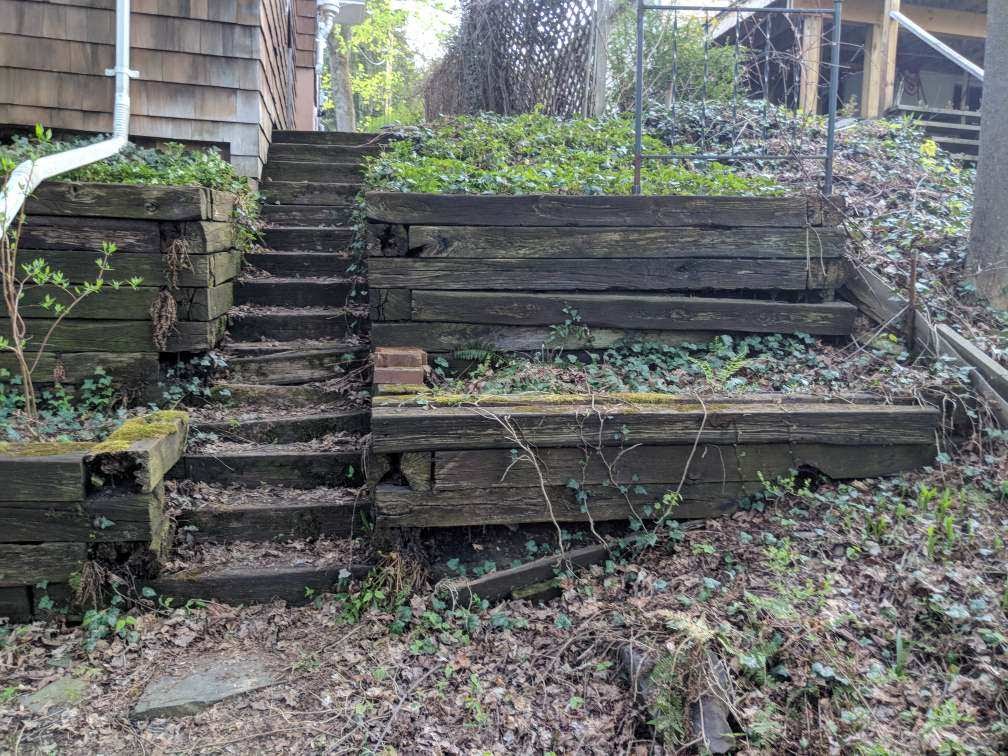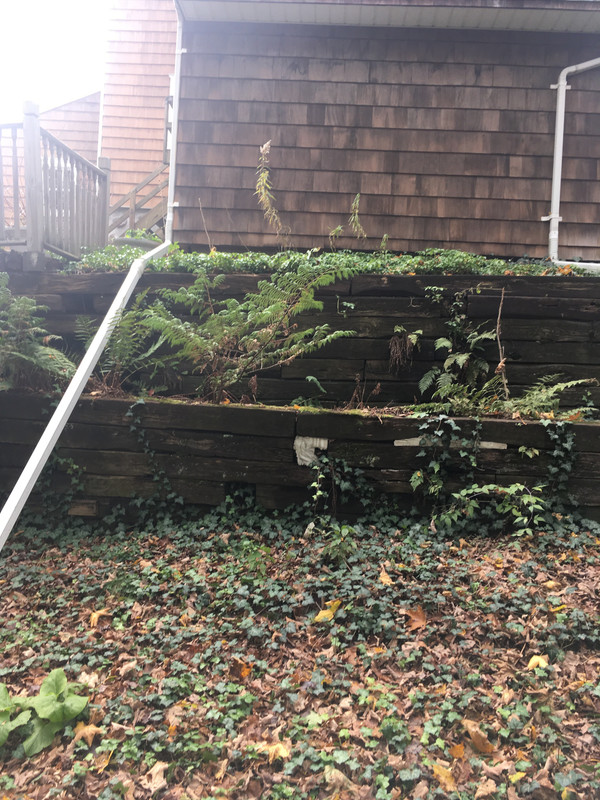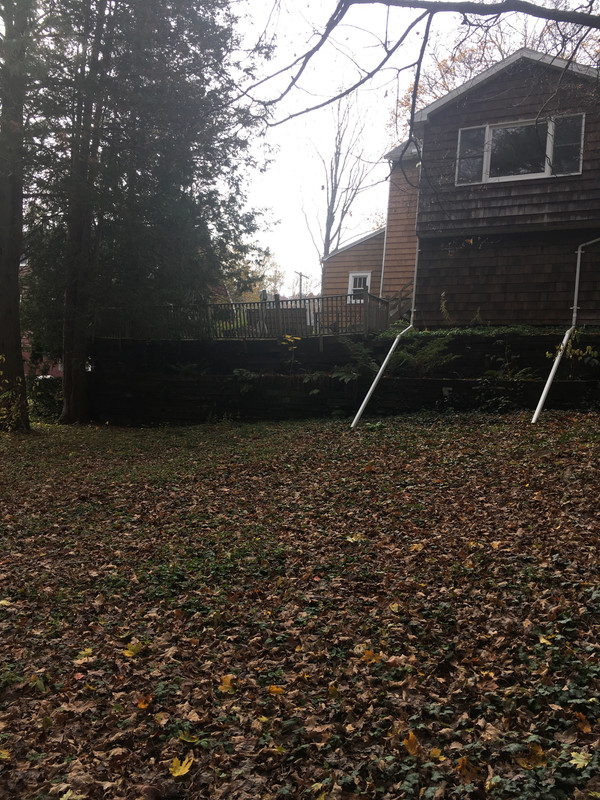Hello,
I have a bit of a retaining wall predicament. I recently bought a home with a 55 ft wide x 10 ft high double level retaining wall that is in a state of rot. Pictures will be included. On the top sits my house and a patio. The wall extends the width of the property. The properties surrounding us all have retaining walls from our property to theirs, so going through a neighbors yard is not as easy as it could be for other properties to get the wall replaced. We have talked with neighbors though, and all have agreed to allow equipment through their yards in order to have our wall replaced. (We would cover any damage to the properties)
I've had a number of landscapers and contractors come to the house to try and get it replaced professionally, but they've all refused, one even saw it and just said a polite "no" and left as quickly as he could. In total > 10 people/businesses have looked at the wall.
My husband and I are open to all options. We want to get this fixed as our yard is large and we have two large dogs that would love to use it but we cannot get it fenced in without fixing this wall.
In an ideal world we replace the wall with something more long lasting than wood, and the wall would have a ramp or whatnot so that if we have an arborist come to the property, they can get equipment in or out. We are willing to do this wall ourselves. My father is a contractor as well and my cousin is an engineer. I just need some advice on construction, good materials to use, etc.




I have a bit of a retaining wall predicament. I recently bought a home with a 55 ft wide x 10 ft high double level retaining wall that is in a state of rot. Pictures will be included. On the top sits my house and a patio. The wall extends the width of the property. The properties surrounding us all have retaining walls from our property to theirs, so going through a neighbors yard is not as easy as it could be for other properties to get the wall replaced. We have talked with neighbors though, and all have agreed to allow equipment through their yards in order to have our wall replaced. (We would cover any damage to the properties)
I've had a number of landscapers and contractors come to the house to try and get it replaced professionally, but they've all refused, one even saw it and just said a polite "no" and left as quickly as he could. In total > 10 people/businesses have looked at the wall.
My husband and I are open to all options. We want to get this fixed as our yard is large and we have two large dogs that would love to use it but we cannot get it fenced in without fixing this wall.
In an ideal world we replace the wall with something more long lasting than wood, and the wall would have a ramp or whatnot so that if we have an arborist come to the property, they can get equipment in or out. We are willing to do this wall ourselves. My father is a contractor as well and my cousin is an engineer. I just need some advice on construction, good materials to use, etc.










